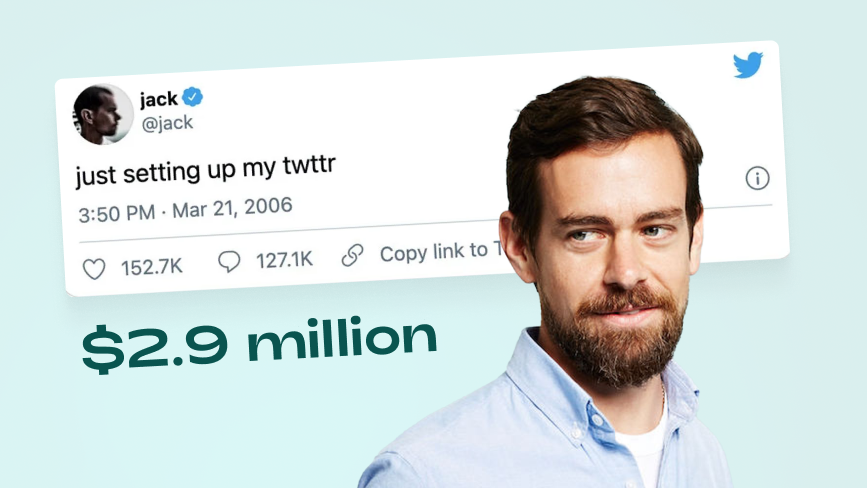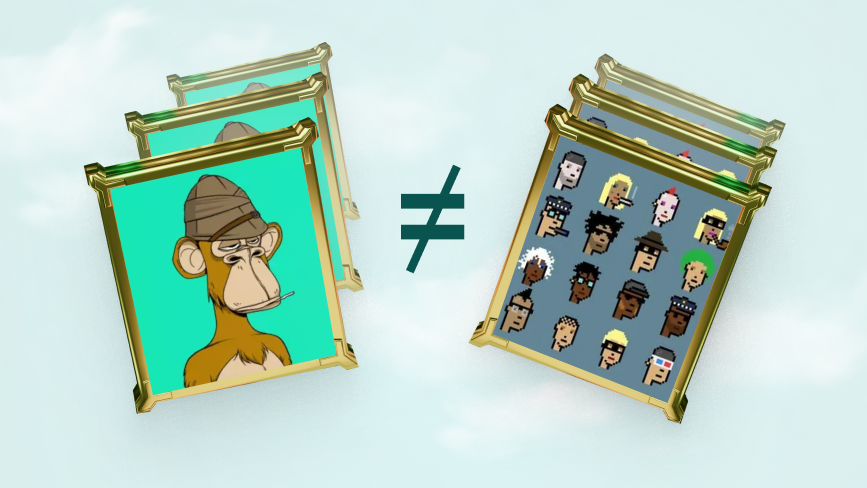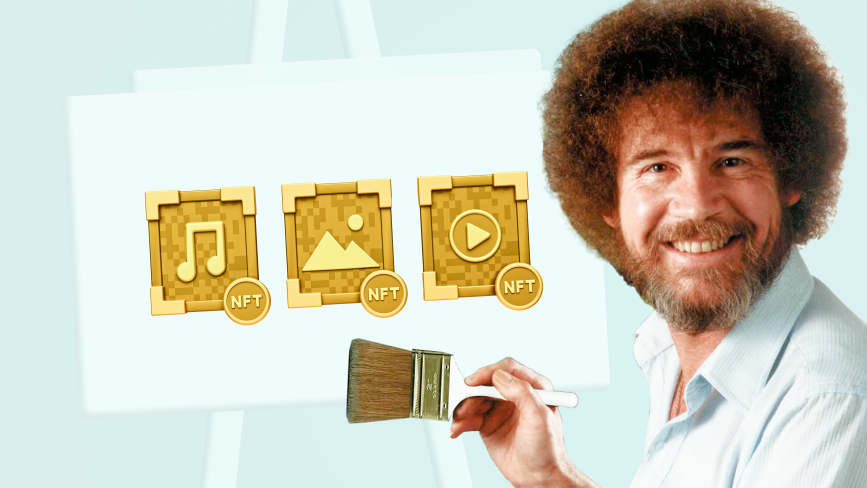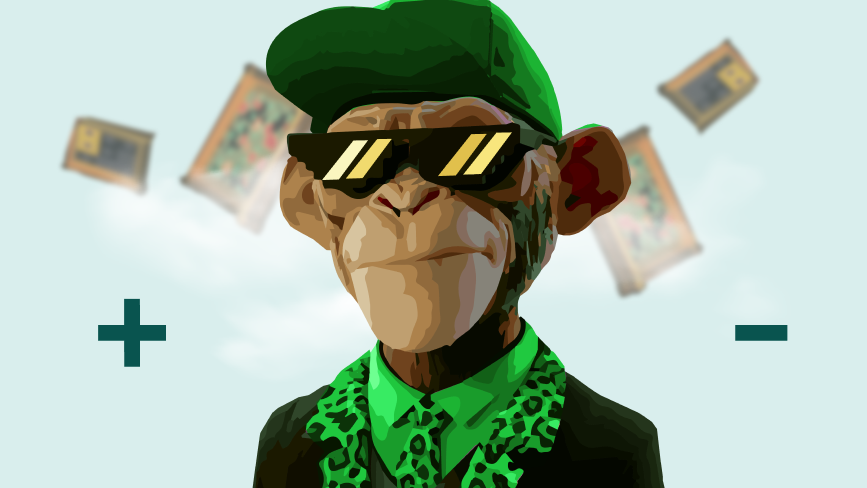What is an NFT?

Understanding NFT
It is fair to say that 2021 was the year of NFT, Ethereum’s enfant terrible. Non-fungible tokens invaded the world of digital currencies to become the most talked-about assets to date. Before we all knew it, NFTs became the center of attention thanks to a number of astounding news related to how non-fungible tokens can make money. Real big money.
From Twitter ex-CEO Jack Dorcey’s $3 mln worth tweet to plain selfies that made Al Ghozali, an Indonesian student, a millionaire – so-called NFT art is now regarded as a new means of huge profits in the world of crypto. But what creates such potential? How did non-fungible tokens get so big? How do NFTs work? And, finally, does NFT have a tomorrow?
Look for the answers to these questions and more in the paragraphs below.

1. What is an NFT?
Back in 2021, when the whole thing started, you could come across a frequent question of “What does NFT stand for?”. The answer is the first step to understanding the NFT meaning.
NFT stands for non-fungible token. What does that mean? Well, it may take some time to wrap your head around this concept, but when you do, you’ll see that it’s quite simple.
Non-fungible means that a token cannot be exchanged for another token or even be equal. Take dollars or even any of the ‘traditional’ cryptos, for example. One dollar will always be one dollar, and a dollar bill will always be equal to another dollar bill of the same value. Just the same way usual cryptos work: one BTC is always equal to another BTC, etc.
NFT, however, is an altogether different story. Each non-fungible token has its own value and cannot be exchanged. You cannot splice it or create the same one. But what’s the point, and why would someone need such a thing, you may ask. And here’s where NFT art comes into play.
2. Introducing NFT Art
NFT art is any digital item bought and sold using non-fungible tokens. It can be an image, a GIF, a video clip, a music track, or a selfie. Other examples include game character skins, screenshots, etc. With NFTs, you can turn virtually anything into a piece of digital art and a source of income.
By turning a digital item into an NFT, you make it, for the lack of a better word, unique. The newly created NFT has the digital signature that sets it apart from all other NFTs out there. From this moment on, you can put your NFT on sale using any of the multiple NFT marketplaces and see where it takes you. And it can take you pretty far.
Remember Jack Dorcey, a former Twitter CEO, and Al Ghozali, an Indonesian student, mentioned above? Each of them used NFTs to make money. Dorcey sold his first-ever tweet for $3 million, and Al Ghozali’s collection of 1000 selfies unexpectedly peaked at $1 million, making him a millionaire at 21.
But wait, does that mean that anyone can make millions on NFTs? Well, not really.

3. How Do NFTs Work?
When digital content becomes an NFT, it becomes an asset – a thing to sell, a thing to buy, and a thing to own. NFT marketplaces are flooded with tons of non-fungible tokens, each representing a particular piece of digital artwork. Some of these items are in great demand, and therefore, their prices are high. At the same time, most NFTs will hardly ever get significantly big. But there’s a chance, and that’s what lures users into creating, buying, and selling non-fungible tokens.
The trick is that a piece of NFT art can get popular at any moment, resulting in dramatic price growth. This is great news. However, you can never tell your odds of becoming rich on NFTs.
Whether you sell or buy non-fungibles, you can’t foresee the NFT market movements. It is highly volatile, and any minute thing can affect prices. In this regard, Al Ghozali’s sudden success is a pure example of a survivorship bias.
Chances for an Asian student becoming insanely rich were next to null. Yet, at the same time, Jack Dorcey’s story is a 100% predictable case. Dorcey is a famous businessman and Twitter co-founder. So it is no surprise that his first tweet put for sale as an NFT was bound to get hot.
But why would anyone want to purchase a piece of NFT art like a social network post’s snapshot, a video clip, an audio track, or a GIF in the first place? Well, we’ll get to it. But before that, let’s look at the three issues you may encounter examining NFTs.
4. The Three Issues with NFTs
With NFTs, we are talking about owning a piece of digital art or any other digital content and selling it. The concept brings up three major questions:
- How can one own a thing that is physically non-existent?
- Can a piece of digital art be unique?
- Are NFTs pointless?
4.1. If it’s digital, it’s just not there
Strictly speaking, nothing digital can be considered real per se. Digital content remains real as far as servers go. But should those storages go out of order – woosh, and all is gone. So in terms of physically touching art, you’re buying, just like one can buy a painting or a sculpture, non-fungibles are a total miss.
But again, this is a nuance that many agree to deal with since we’re living in a digitized era that comes with its pros and cons.
4.2. Copy that
Speaking of paintings and stuff. You know that a piece of physical art is unique because it has an author’s signature on it, or it comes with a certificate of authenticity, or whatever. And you know that even if there is a certain number of copies made – which is probably the case with a valuable piece of art – those copies can in no way come up to the standards of the one and only original that you own.
But with digital art or any other form of digital content, things get a little more complicated. Anyone can make a copy of a digital item. You can make a screenshot of a famous million-dollar worth post or a game scene; you can download an image, an audio track, a video clip, a GIF, or whatever you want and create multiple copies of it. And while there will still be an official owner of a downloaded token and the token itself will have a unique digital signature, nothing can stop you from copying and distributing it on the net. At least, that’s how it is for now.
This issue leads us to the final question.

4.3 What is the point of NFT art?
So we are left with a few obvious facts:
- You cannot physically own a non-fungible token.
- NFTs are easily copyable.
- Owning an NFT does not make you the only person to use it.
- NFT art does not seem to make any sense, or does it?
If it is so, then where does this craze come from? What makes thousands and even millions of people worldwide create, sell and buy NFT art? The answer is simple: it’s the idea of becoming rich quickly.
It’s nothing new, really. People have been trying to find the easiest ways to make money for centuries. Passive income through investing is arguably the top choice for that. You just invest funds in whatever you think will give you the best returns and hope it works. It’s investing in a nutshell.
There are many things people invest in: currencies, energies, metals, indices, etc. The blockchain era came up with a new form of asset – cryptos.
Remember when back in the day, Bitcoin was worth next to nothing? And then, following a string of events, the first-ever cryptocurrency suddenly became the world’s most expensive asset.
NFT enthusiasts believe that something of the sort may happen to non-fungible tokens, as well. Judging by the hype around non-fungibles, those people may not be far from the truth.
Consider the crypto phenomenon as a whole and the NFT thing, in particular, a bubble or a hoax, or see it as something nonsensical – the reality is that there are many people out there who would tell you the opposite. They believe that NFT is the next big thing in cryptocurrency.
NFT art advocates insist that the technology lays new grounds in copyright and will positively affect artists all over the world. Non-fungibles, they say, will let independent creators profit from their art without dealing with unnecessary mediators like labels, distributors, and such.
However, there is an opposite opinion to that. The main criticism against NFT being a new way for artists to make money is that the system is unregulated, and there is no way to tell for sure if the artist selling an NFT is the original artist to create it. Even now, there are multiple examples of other people’s works being sold NFT art without them knowing it. Another issue is that creating non-fungibles is not free and may require significant gas and list fees, which many DIY artists simply cannot afford.
Nevertheless, the NFT community keeps growing and shaping the crypto world of tomorrow. As a result, there is an abundance of NFT marketplaces on the net eager to become a platform for you to create, sell and buy non-fungibles.

5. How to Become an NFT Artist?
Anyone can become an NFT artist. All you need is to create or mint (cause this is the proper term) your own NFT art.
Simply put, the process is relatively straightforward. First, you choose what you want to turn into NFT art – a GIF, a screenshot, a photo, a video, an audio track, etc. Then, you go to an NFT marketplace of your choice. There are plenty of them. OpenSea, Axie Marketplace, Rarible, SuperRare, and NiftyGateway are the most popular. However, you should keep in mind that a marketplace may specialize in particular NFT types. Like the NBA Top Shot Marketplace, which focuses exclusively on NBA-related tokens.
Once you log in, you can proceed with minting NFT art. The process goes as simply as hitting the create button, uploading a file, and letting the platform do its thing. When your NFT is minted, you can list it for sale.
Although different platforms may have different approaches to minting non-fungible tokens, in general, they all come down to a mutual set of steps. But no matter what the minting process differences are, one thing remains the same for all platforms – you need to have a crypto exchange account and an ETH-friendly crypto wallet. Since NFT is an Ethereum-based technology, you need to make ETH transactions to mint, sell and buy non-fungibles.
5.1 How to buy NFT art?
If you want to buy NFT art, make sure that you’re all set in terms of having a crypto account and a crypto wallet first. After that, go to the marketplace of your choice and proceed with browsing the catalog, looking for a token you wish to purchase.
6. Why Would Anyone Want to Buy NFT Art?
With all that has been said, why would anyone in the world want to buy non-fungible tokens? There are two main reasons.
The first one is that if you are a regular buyer, you would want to support your favorite artist by buying their art as NFTs. The second reason is that you may be a collector, purchasing NFTs and keeping them in hopes that they will grow in price so you could sell them for profit.
With reason one, it gets pretty straightforward: a fan is a fan, and no one can stop them from supporting a favorite artist. However, the number two reason comes with a hefty nuance to consider.
With NFT, it is virtually impossible to predict how a token will perform. Non-fungibles are even more volatile than any of the ‘regular’ cryptos. Pricing entirely depends on popularity. And as you may guess, there is no chance you could ever foresee such changes. The worst-case scenario may be that you invest in a token that becomes worthless, and no one wants to buy it from you.
7. Pros and Cons
We’re almost done with explaining non-fungibles. But before we move on speculating on whether or not non-fungibles have a future, let’s make a quick wrap-up of their pros and cons.
7.1 Pros
- Price growth.
NFTs are having their moment right now. The hype is still on; the community keeps getting bigger, prices keep growing. There’s no telling how it’s going to be like this. So maybe it’s time to seize the day?
- Owning something unique.
Some may get that sweet feeling of knowing they own a one-of-a-kind piece – a painting, a GIF, a digital image, an audio clip, or another digital asset.
- A chance to take part in tech evolution.
There’s a belief that blockchain technology could push forward the Internet’s evolution. Those who think so view non-fungibles as the next step in the process.
- Copyright protection (arguably, though)
Finally, there’s an idea that the technology could improve copyright protection.

7.2 Cons
- It’s only digital.
So far, NFTs can be used for digital content only. You can’t digitize your favorite piece of physical art to enjoy it exclusively by yourself. Tokens are uploaded online, and anyone can see, copy and download them.
- Elusive value.
That’s the weakest side of NFTs. Even experts agree on that. While you may have paid tons of dollars for a GIF or a celebrity’s post, other Internet users can simply download it for free. So purchasing a piece of NFT art only means that you are buying a token behind it but not the piece itself.
- Environmental effect.
That’s a fact: blockchain technology is not eco-friendly. Transactions require insane amounts of power. NFT is no exception. Although it’s hard to say how it will affect the whole blockchain phenomenon, the issue will definitely require a solution.
Conclusion: Is There a Future for Non-Fungible Tokens?
Do NFTs have a tomorrow? That’s the question a lot of people are pondering. On the one hand, some would say that the technology has great potential, mainly in copyright. But on the other hand, such issues as the environmental effect, the absence of legal control, and the general unregulated nature of the NFT ecosystem seem like serious arguments that are hard to ignore.
One thing is for sure: the future of NFTs is not carved in stone, and any assumption regarding today could be hit or miss.
But from the investor standpoint, it is still safer and more reasonable to invest in something we all know for sure, something that has a longer history and stronger credibility. Cryptos come and go, whereas things like currencies, metals, energies, and indices stay.
FAQs
What is NFT?
NFT stands for non-fungible token. It is a type of Ethereum-based token that cannot be exchanged for one another because each of them is unique and has its own value. NFT tokens represent pieces of digital content: images, GIFs, videos, screenshots, virtual trading cards, music, etc. Non-fungible tokens are bought and sold like assets or collectibles.
How to Buy NFT?
You can buy, sell and even create non-fungible tokens using NFT marketplaces. You will need to have a crypto exchange account and a crypto wallet supporting ETH for any operation.
Why would anyone buy an NFT?
People choose to buy NFTs to put them on sale later, when the price gets higher, or to support their favorite artists.
What is the most expensive NFT?
In December 2021, The Merge by Pak was sold for $91 million, becoming the most expensive piece of NFT art to date.




